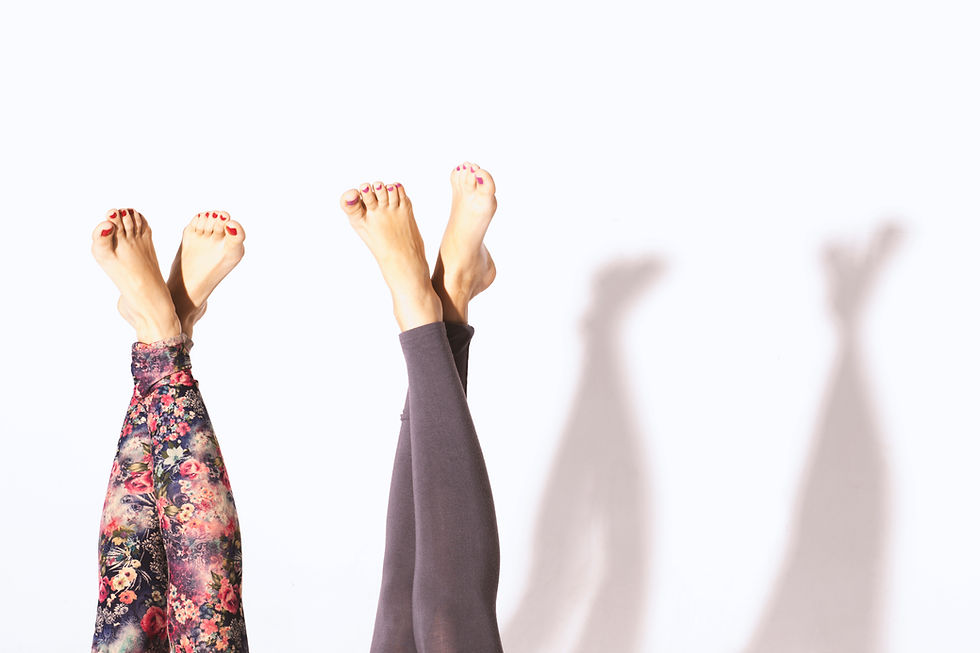Many people with lymphoedema ask me if it is okay to substitute their compression garment for gym clothes. Active wear is casual and appealing to our sense of aesthetic. It can make you feel confident and fashionable. The question you need to ask though is: is active wear really suitable for someone with lymphoedema? The answer is no.
You will often notice a garment compression expressed in various terms: - Deniers (D) and milligram of mercury (mmHg). These two unit of measurement are vastly different and cannot really be converted from one to the other. Let's have a look at the facts:
Most active wear has a compression of 70 to 280 deniers or somewhere between 13 and 19 mmHg. Denier is related to the thickness of the textile yarn used to weave the garment. Using a thin thread will produce a sheer garment, and of course, the thicker the thread the opaquer it would be. A support stocking of 70D would be perfect for a healthy person standing all day long, for travel, or a healthy pregnant woman. An individual with mild varicose veins may wear 140D-280D.
On the other hand, mmHg is the unit of measurement for the pressure exerted on your blood and lymph system by the garment and is considered the most scientific.
To be considered a "medical graduated compression garment" the compression must be distributed gradually along the limb and must be strongest at the smallest point of the ankle or the wrist and lightest at the top of the thigh or near the shoulder joint. Furthermore, it can range from class 1 between 18-21mmHg to class 4, which seats around 49mmHg plus.
Your doctor and usually your lymphoedema therapist will decide which garment and which compression is needed to manage your condition. Generally, a white pair of stockings or "TED" is distributed when you are in hospital and they are not graduated and only have about 18mmHg. Their measurement is taken at the calf muscles, as their purpose is to prevent the blood pooling in this area when in bed to avoid thrombo-embolism. A class1 garment is prescribed for preventative measures or when someone is diagnosed with peripheral artery disease because in this case a light pressure is recommended in order not to impede the blood circulation already compromised. People with lymphoedema need to wear a class 2 or higher compression garment to maintain the limb size or a reduction in swelling that has been obtained with bandages. This measure applies equally for venous insufficiency when swelling is involved. It is a bit more complicated than that but I hope this simple explanation gives you an idea for the use of a specific compression garment.

So think twice before you ditch the prescribed garment for gym wear. If you do you will compromise the hard work and the expense that you may have incurred in getting lymphoedema under control in your limb. Your garment is your second skin because your own is not containing the swelling.
Lymphoedema is chronic but it can be managed with lymphatic drainage massage, exercise, good hygiene and compression garments. Always talk to your doctor or lymphoedema specialist before choosing a garment and don't fall into the trap of embarking on a self-prescribed management program. Your Lulu Lemon tights might look amazing but sadly they aren't doing you any favours when it comes to treating lymphoedema.
"Twenty years from now you will be more disappointed by the things you did not do than the things you did" Mark Twain
Reference
Certification, R. G. (2008, January). Medical compression hosiery. Retrieved January 27, 2021, from Quality Assurance RAL-GZ 387/1: http://www.tagungsmanagement.org/icc/images/stories/PDF/ral_gz_387_englisch.pdf
Sanyleg. (2018). Retrieved January 27, 2021, from Compression stocking for wellness and sport: https://www.google.com/search?q=who+is+mark+twain&oq=who+is+mark+twain&aqs=chrome..69i57j46j0l5.4710j1j15&sourceid=chrome&ie=UTF-8
Solidea. (n.d.). Retrieved January 27, 2021, from Elastic compression, ideal prevention, effective therapy: https://www.solidea.com/en/salute-e-benessere/medical-and-scientific-information/elastic-compression-ideal-prevention-effective-therapy

Comments